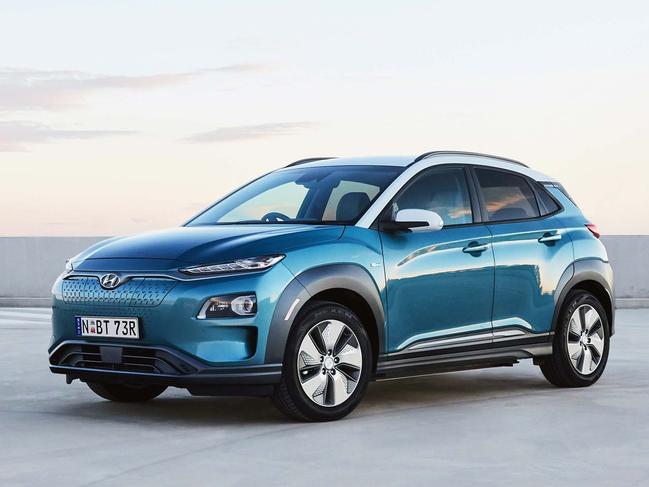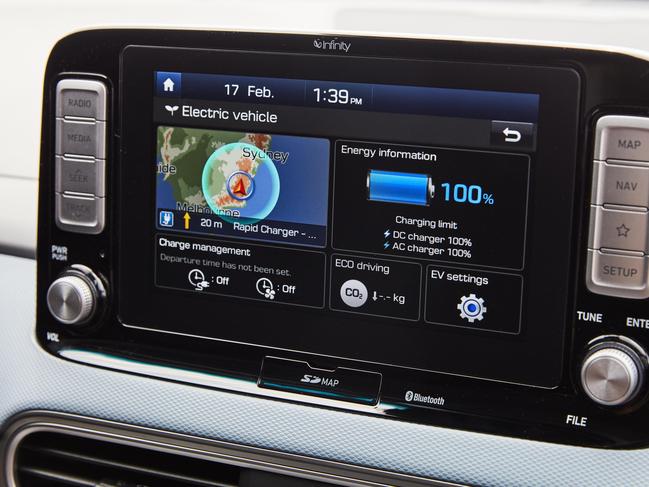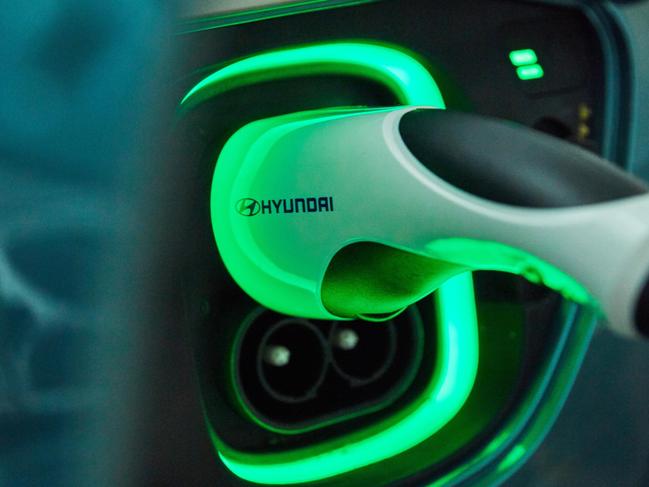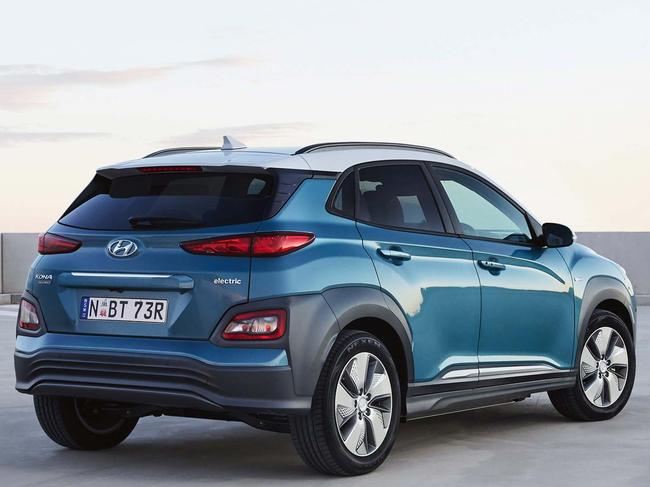Hyundai Kona Electric surprises in extended road test
There’s been a lot of debate about electrification, but the only way to get the real picture is to climb behind the wheel. Here’s the good, the bad and the ugly of owning an EV.

Hitech
Don't miss out on the headlines from Hitech. Followed categories will be added to My News.
The bridge that joins the NSW twin tourist towns of Tuncurry and Forster was literally a bridge too far for electric vehicles a decade ago.
A touch over 300km from the Sydney CBD, the popular holiday destination was out of the reach of anything that didn’t use petrol.
Not any more. I’ve done the journey with range to spare in Hyundai’s Kona Electric.
The trip started well. The Kona’s distance to empty initially read 479km and it lost just 10km of predicted range on the 26km run home from Hyundai’s head office.

While petrol cars sip on the freeway and guzzle in town, EVs do exactly the opposite.
They are at their most efficient in stop-start traffic because they recharge the battery every time they slow down. On the Kona you can choose from mild to maximum battery regeneration. Choose max and the car will slow significantly as soon as you lift off the accelerator. It takes a little getting used to but it soon becomes second nature and you find yourself hardly touching the brake pedal.
You can also save range by turning the aircon off around town — it can mean an extra 10 per cent over the life of a charge. At this time of the year it’s very easy to do without, with one exception. On cold mornings, the heater takes a while to crank up because there’s no hot engine to draw from. Turn the temperature up to get things toasty and your estimated range can drop by up to 100km. You’ll never lose that much range in reality because the load on the battery gets less as the car heats up.

As I left for Forster, the range was 441km and after 40km in Sydney traffic, we’d lost almost exactly 40km of range. So far so good.
But freeways are kryptonite for EVs and soon the estimated range was dropping more quickly than the kilometres covered. That’s because there’s no battery regeneration and more resistance at 110km/h.
There was never a danger of falling short because I’d given myself a healthy range buffer and as I closed in on Forster, I was on course to make it with roughly 50km of range to spare. That equated to roughly 370km of range, 70km less than the original estimate.
Just before the Forster turn-off, I took a short detour off the freeway to a free NRMA charging station at Nabiac.

There were no fellow EV drivers in sight so we hooked up straight away. The charging mechanism was as simple to operate as a petrol pump but that’s where the similarities ended. It took 61 minutes to charge to 80 per cent — or 380km range — which is the recommended practice. Charging from 80 to 100 per cent takes another hour, because the rate of charge slows to protect the battery. That’s obviously not ideal. Imagine arriving at the sole charging outlet minutes after another EV and having to wait two hours as the driver insisted on charging to 100 per cent. Suddenly you’re in for a three-hour stopover.

After two weeks of pottering around Forster and its surrounds, the battery was down to 49 per cent and it was time to revisit Nabiac — a 40km round trip — for a top up before the trip home. The 31 per cent charge took 37 minutes and to be safe, I topped up by plugging into a household power point at our holiday accommodation for a couple of hours. Had I brought along an adaptor I could have also recharged from an outlet at the local shopping mall.
I set off for home with 439km of range and arrived with 75km of range after a detour to McDonalds. Heavy traffic on the way improved the car’s range and it was only 46km shy of its original estimate.

It’s important to remember that this test takes the Kona Electric well out of its comfort zone. As a city commuter, range and recharging times are simply not an issue. Around town, it would have roughly the same range as the petrol version. It would also be less hassle to recharge than a petrol car would be to refuel.
As for the driving experience, it was serene and comfortable. The Kona is quiet, quick off the mark, comfortable and competent through the corners. The interior has all the creature comforts and driver assistance tech you’d get on an entry level luxury car, although space is at a premium and it feels like a cheaper car than its price tag.
That price tag remains prohibitively high. At $66,000 drive-away, it’s about $28,000 more than the equivalent petrol model.
And that’s why, despite the hype, EVs make up less than 1 per cent of the total new-car market.
Originally published as Hyundai Kona Electric surprises in extended road test



